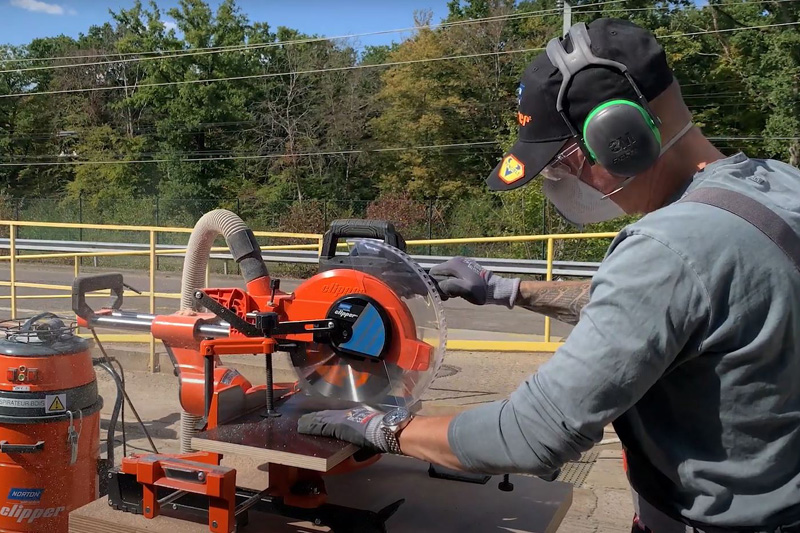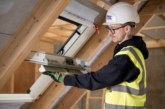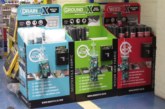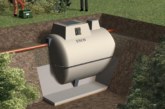
As demand for laminates has surged, Colin Knight, National Sales Manager at Saint-Gobain Abrasives, discusses how selling the right tools will help the trade deliver a smooth, clean cut every time.
When working with laminates, one of the biggest issues that tradespeople face is the risk of chipping and damaging the surface — and as this material is often used in areas that are highly visible and used daily, these are mistakes that will certainly not go unnoticed.
The demand for laminates has rocketed over the past year — particularly for Antimicrobial High-Pressure Laminates (HPL), Luxury Vinyl Tiles (LVT) and wooden composites for flooring, countertops and wall partitions. With homeowners seeking high-end finishes without the hefty price tag, laminate materials are overtaking their solid wood counterparts. And although in many cases they are easier to clean, maintain and install, they are also more at risk of damage during the cutting process.
So how can tradespeople ensure a smooth, quality cut every time? Well, it’s mainly down to the tools used as melamine-faced boards, plywood, laminated panels and HPL sheets all require a specific type of saw blade.
Ensuring that the cutting equipment being used is suitable for the application is critical, as saw blades have different shaped, angled teeth for different materials. When your customers shopping for circular blades for laminates, a Triple Chid Grind (TCG) blade is usually a good place to start.
When looking closely at a TCG blade, it’s easy to identify that the teeth aren’t all identical but actually consist of a mix of trapezoid and flat shaped grooves. The first trapezoid tooth makes the initial cut and removes the majority of the material, while the second, flat shaped tooth widens and cleans the cut for a better finish. Finally, the third trapezoid will clean and finish the cut, and therefore complete the process.
These alternating teeth and cutting actions minimise the stress and wear on the blade to ensure durability — particularly when compared to a normal Flat Top Grind (FTG) saw blade.
Furthermore, it is clear that more and more clients and the industry as a whole are prioritising sustainability in builds. As we look to minimise waste and incorporate more sustainable approaches on site, reusing and prolonging tools where possible is a great way to reduce the impact on the environment, as well as saving money for trades in the long run too.
A good TCG saw blade will usually have high quality Tungsten Carbide Tips which, with the help of a saw sharpening expert, can even be resharpened if there are signs of the tips becoming blunt — ensuring a consistently quality cut, longer product life and cost savings on replacements.
When using jigsaw blades on laminates, it’s vital to ensure that the blade is capable of providing an extra clean cut, due to the chipping nature of the material. To do this, the packaging should clearly state that the blade is suitable for cutting laminate materials, and merchants should ensure that their customers look for blades made from BIM (bi-metal) with a pointed design to the teeth.
To ensure user safety, it’s important that the bore of the machinery that will be used is checked, and what diameter of blade will fit. If a blade is too big or too small for the machine, it will interfere with safety guards and actually be dangerous to use.
For those who already have the correct circular saw blade but are hiring machinery for a certain job, merchants can supply reduction rings to adjust the arbour hole if the diameter is suitable but the bore of the machine is different to the blade. This will allow users to operate machinery safely, without having to purchase another blade just for one-off, short term use.
For materials such as wood and composites, the question that trades should be asking merchants when looking for the right blade is whether a fast, ripping type cut is required, or rather a cleaner, smoother cut. For laminates, the aim is to always achieve an extra-clean cut, so blades should be designed specifically for this purpose alone.
Norton Clipper’s full blade range is colour coded specifically to ensure tradespeople can easily identify exactly which blade is best for the job — for laminates, they should just look out for the yellow packaging.
Click here for more information on selling the best abrasive products for laminates.









